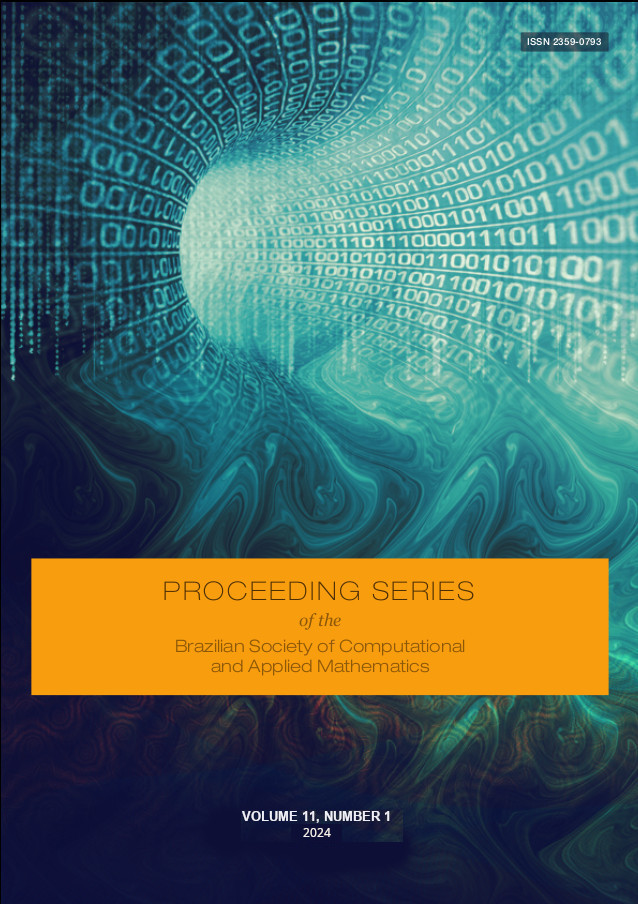Parametric Linear Stability Analysis of Tethered System Dynamics in Keplerian Orbits
DOI:
https://doi.org/10.5540/03.2025.011.01.0456Keywords:
Stability, tether system, dumbbell dynamics, Deprit-Hori method, orbital debrisAbstract
The objective of this study is to analyze the dynamics of a tether system comprised of two point masses interconnected by a cable (Space Tethers), orbiting a Newtonian center of attraction in a Keplerian orbit without external forces. Through reductions in the equations of motion, a Hamiltonian function is derived, and four stationary solutions are identified, two of which are stable. The study delves into the parametric linear stability concerning the eccentricity parameter (e) of the elliptical orbit and another parameter denoted as α, representing the angle between the tether’s projection and the orbit plane. By employing the Deprit-Hori method alongside numerical computations, the study maps stability and instability regions in the parameter plane α× e.
Downloads
References
V. S. Aslanov, A. S. Ledkov, A. K. Misra, and A. D. Guerman. “Dynamics of Space Elevator After Tether Rupture”. In: Journal of Guidance Control and Dynamics 36 (2013), pp. 986–992. issn: 15333884. doi: 10.2514/1.59378.
V. S. Aslanov, A. K. Misra, and V. V. Yudintsev. “Chaotic attitude motion of a low-thrust tug-debris tethered system in a Keplerian orbit”. In: Acta Astronautica 139 (2017), pp. 419–427. issn: 0094-5765. doi: https://doi.org/10.1016/j.actaastro.2017.07.008.
V. V. Beletski and E. M. Levin. “Dynamics of space tether systems.” In: Published for the American Astronautical Society by Univelt San Diego (1993), p. 449.
M. P. Cartmell and D. J. McKenzie. “A review of space tether research”. In: Progress in Aerospace Sciences 44 (1 Jan. 2008), pp. 1–21. issn: 0376-0421. doi: https://doi.org/10.1016/j.paerosci.2007.08.002. url: http://www.sciencedirect.com/science/article/pii/S0376042107000656.
Z. Guang and Z. Jing-rui. “Space Tether Net System for Debris Capture and Removal”. In: 4th International Conference on Intelligent Human-Machine Systems and Cybernetics 1 (2012), pp. 257–261. doi: 10.1109/IHMSC.2012.71.
W. Huang, H. Zou, H. Liu, W. Yang, J. Gao, and Z. Liu. “Contact dynamic analysis of tether-net system for space debris capture using incremental potential formulation”. In: Advances in Space Research 72.6 (2023), pp. 2039–2050. issn: 0273-1177. doi: https://doi.org/10.1016/j.asr.2023.05.054.
K. Kumar and K. D. Kumar. “Tethered dual spacecraft configuration: A solution to attitude control problems”. In: Aerospace Science and Technology 4 (2000), pp. 495–505. issn: 12709638. doi: 10.1016/S1270-9638(00)01064-6.
A. K. Misra, Z. Amier, and V. J. Modi. “Attitude dynamics of three-body tethered systems.” In: Acta Astronautica (1988), p. 1059.
A. F. B. A. Prado. “Engineering notes using tethered gravity-assisted maneuvers for planetary capture”. In: Journal of Guidance, Control, and Dynamics 38 (2015), pp. 1852–1855. issn: 15333884. doi: 10.2514/1.G001009. url: https://arc.aiaa.org/doi/10.2514/1.G001009.
D. P. S. Santos and A. Ferreira. “Three-dimensional Two-Body Tether System — Equilibrium Solutions”. In: Journal of Physics: Conference Series 641.1 (2015), p. 012009. doi: 10.1088/1742-6596/641/1/012009. url: https://dx.doi.org/10.1088/1742-6596/641/1/012009.
D. P. S. Santos, J. L. M. Neto, V. T. Azevedo, and J. K. S. Formiga. “Linear stability analysis in tether system using its Hamiltonian function”. In: The European Physical Journal Special Topics 232 (2023), pp. 3175–3183. issn: 1951-6355. doi: 10.1140/epjs/s11734-023-01022-0.

